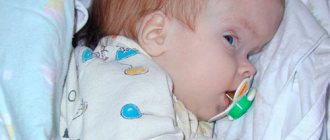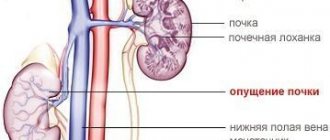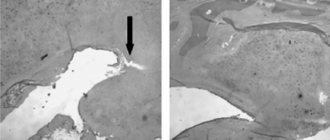Prevalence of hearing loss in children of the 1st year of life in federal districts of the Russian Federation in 2016 (1 case per 1000 registered newborns).
Hearing impairment is the most common congenital sensory pathology. According to the results of epidemiological studies, congenital and early childhood hearing loss occurs with a frequency of 1 to 3 per 1000 healthy newborns, depending on the degree of hearing loss taken into account [1–4]. Hearing disability among children 0–17 years old in the Russian Federation is 1 in 1000 [5]. The results obtained from the implementation of universal audiological screening programs for newborns serve as a starting point for a more thorough analysis of the prevalence of congenital and prelingual hearing loss [6]. According to English colleagues, congenital hearing loss occurs in 1.79 per 1000 newborns; in children aged 5 years, the prevalence of persistent hearing loss is 3.65 per 1000, while mild and unilateral forms of hearing impairment occur with a frequency of 2.13 per 1000 children of the corresponding age. age [7]. Among children treated in neonatal rehabilitation and intensive care units, the prevalence of hearing impairment is an order of magnitude higher [8].
In Russia, since 2008, a program of universal audiological screening of newborns has been carried out based on the registration of delayed evoked otoacoustic emissions (DEOAE) [9–12]. Data analysis showed the high effectiveness of the program in reducing the age of diagnosis of congenital and prelingual hearing loss and increasing the proportion of children with hearing impairment identified in the first year of life from 5.2% in 1998 to 21% in 2013 [13].
International recommendations determine the optimal timing and quality indicators of the stages of audiological screening: screening coverage of at least 95% of newborns up to the 1st month of life, a complete audiological examination of at least 90% of identified children up to 3 months of life [14, 15]. According to WHO estimates, the share of hereditary hearing impairments in the structure of childhood hearing loss is 40%. It is believed that 60% of cases of persistent childhood hearing loss can be prevented [16].
Modern capabilities of molecular genetics in the diagnosis of hereditary diseases have led to a revision of views on the etiology of congenital and prelingual sensorineural hearing loss and an awareness of the leading role of hereditary factors [17–21]. The most common mutations are in the GJB 2
, encoding the protein connexin 26, which cause up to 68% of cases of congenital bilateral nonsyndromic sensorineural hearing loss among children examined in the 1st year of life [22].
Moreover, children with GJB 2-
related hearing loss in 50% of cases do not have relatives with hearing impairment [23].
According to the latest data, the main non-hereditary cause of congenital and prelingual hearing loss is considered to be intrauterine infection with cytomegalovirus (CMV). Congenital CMV infection can be a direct cause of premature birth, intrauterine growth retardation, and neurological pathology, but it is asymptomatic in 90% of newborns. The incidence of sensorineural hearing loss in asymptomatic congenital CMV infection is 25%. In half of the cases, sensorineural hearing loss is characterized by a progressive course; with equal probability, bilateral or unilateral hearing loss develops [24, 25].
Other intrauterine infections are now much less likely to cause congenital hearing impairment. Due to successful immunization of the population, congenital rubella has largely lost its relevance [26], while toxoplasmosis and syphilis, if detected and treated in a timely manner, also rarely lead to congenital hearing loss [27, 28].
About 17% of cases of persistent childhood hearing loss are caused by perinatal pathology [16], therefore, examination of children with risk factors for hearing loss and deafness in the first year of life is necessary, regardless of the results of audiological screening [2, 29, 30].
The purpose of this study is to study the epidemiology of persistent hearing impairment among children of the 1st year of life in the Russian Federation in the context of the implementation of a program of universal audiological screening of newborns.
Calculation of the prevalence of persistent hearing loss in children of the 1st year of life in the federal districts of the Russian Federation was carried out on the basis of information on the number of cases of confirmed hearing loss among children of the 1st year of life according to reports from regional audiological centers for 2016 and information on registered births in 2016. [31].
An analysis of the clinical-audiological structure and causes of congenital and pre-speech hearing loss was carried out in a cohort of 405 children born in 2012, examined at the age of 1 month to 4 years of life in the consultative and diagnostic clinic of the Federal State Budgetary Institution "Russian Scientific Clinical Center for Audiology and Hearing Prosthetics" FMBA of Russia (RNCCAiS ). The reasons for treatment, risk factors for hearing loss and deafness, age of diagnosis of congenital and pre-speech hearing loss, results and timing of the stages of audiological screening were analyzed. Collection of clinical and anamnestic data was carried out in MS Access 2010, statistical analysis - in MS Excel 2010. To assess the age of confirmation of hearing loss, the median and spread of the distribution were determined.
Results and discussion
The prevalence of congenital and prelingual hearing loss among children of the 1st year of life in the Russian Federation in 2016, according to the data obtained, was 2.5 per 1000 newborns. A more detailed analysis of the constituent entities of the Russian Federation showed the spread of this indicator both across federal districts (FDs) and among the constituent entities of one federal district (figure). A low prevalence of persistent hearing loss in children of the 1st year of life with a frequency of 0.7 per 1000 was noted in the Southern Federal District, a high prevalence with a frequency of 4.4 per 1000 in the Siberian Federal District. In Central F.O. the largest dispersion of this indicator across subjects was noted: in the Kaluga region the prevalence of hearing loss was 17.4 per 1000 newborns, in the Ivanovo region - 0.1 per 1000 newborns, in the neighboring Kostroma region - 1.4 per 1000. Low prevalence rates of persistent hearing loss were obtained in the Komi Republic - 0.1 per 1000 (Northwestern Federal District), in the Kurgan and Sverdlovsk regions - 0.3 per 1000 (Ural Federal District), in the Krasnoyarsk Territory - 0.8 per 1000 (Siberian Federal District), in the Karachay-Cherkess In the Republic - 0.5 per 1000 (North Caucasus Federal District), in the Republic of Crimea and the Republic of Kalmykia - 0.6 per 1000 (Southern Federal District), in the Orenburg Region - 0.1 per 1000 (Volga Federal District). No cases of persistent hearing loss have been identified in children of the 1st year of life in regions with a small population (Jewish Autonomous Region, Chukotka Autonomous Okrug, Far Eastern Federal District).
Within the framework of epidemiological studies, the distribution of children who applied for a complete audiological examination at the RNCAiS, by reason and age of application, is of particular interest (Table 1).
Table 1. Structure of reasons for contact and age of initial contact in the cohort of children born in 2012.
(n=405) In a cohort of 405 children born in 2012, examined at the ages of 0 to 4 years, timely treatment in connection with the detection of hearing loss at the 1st stage of audiological screening ensured the earliest age of detection of this pathology - 4 months. As a result of a more thorough analysis of the dependence of the age of diagnosis on the screening result in groups of children who applied for other reasons, no statistically significant differences were revealed (χ2 test, p
<0.005).
Analysis of the timing of the stages of audiological screening in the group of examined children showed that the 1st stage of screening was carried out in the maternity hospital in 76% of children. The 2nd stage of screening was carried out only in 32% of children aged 3 months inclusive, and in 52% of children under the age of 6 months, which does not correspond to international indicators of the effectiveness of audiological screening programs.
Based on the results of a complete audiological examination, hearing impairment was detected in 292 of 405 children, among them sensorineural hearing loss was diagnosed in 84% of cases, conductive hearing loss in 12% of cases, and mixed hearing loss in 4% of cases. 88% of children had bilateral hearing loss, 12% of children had unilateral hearing loss. The distribution of cases of hearing loss by severity in the study group showed that among bilateral disorders, deafness was diagnosed in 48% of cases, hearing loss of IV degree - in 16%, hearing loss of III degree - in 16%, hearing loss of II degree - in 10% and hearing loss of I degree - in 10% of cases. Among unilateral hearing impairments, 35% of cases were grade IV hearing loss and deafness. Dynamic observation showed that in the study group, 276 (95%) children had persistent congenital and prelingual hearing loss. Among persistent hearing impairments, bilateral nonsyndromic sensorineural hearing loss predominated (212 children).
Results of molecular genetic analysis for mutations in the GJB 2
only 86 of 212 children had.
In 49 (58%) children, the genetic nature of hearing impairment was established. In this group, 33 children were diagnosed with bilateral deafness, 6 with IV degree hearing loss, and 4 with III degree hearing loss. Hearing loss of I and II degrees was diagnosed in 6 children. Thus, with GJB 2
-related hearing loss, severe hearing impairment is more common, but even with mild impairments, the presence of a pathological genotype cannot be excluded. The age of primary diagnosis in the group of children with an altered genotype was 7 months (median; range 1–31 months of life). It is worth noting that in 26% (13/49) of cases, children with confirmed hereditary hearing loss were not identified as a result of audiological screening.
Children with known molecular genetic testing results had risk factors for hearing loss in ¼ of the cases (13 out of 49 children) with GJB 2-
caused by hearing loss and in 2/3 of cases (23 out of 37 children) - with an unchanged genotype in the
GJB 2
(Table 2).
Table 2. Presence of risk factors in children who have the results of molecular genetic testing (GJB2 +/+ is a genotype with two recessive mutations, GJB2 –/–, +/– is a genotype without mutations and heterozygous carriage) Note that the majority of children with with an altered genotype, there were no risk factors for hearing loss and deafness in the medical history.
On the other hand, with an altered genotype, intrauterine infection, hypoxic conditions and severe neurological diseases can occur. Thus, these risk factors may mask a truly hereditary cause of congenital hearing loss. Bilateral nonsyndromic sensorineural hearing loss of any severity, regardless of the presence of risk factors, is an indication for genetic testing. Molecular genetic testing was not performed in 126 of 212 children with bilateral nonsyndromic sensorineural hearing loss. If implemented, one could expect at least 70 additional children with GJB 2-
caused by hearing loss, since its estimated frequency among all cases of congenital and pre-lingual bilateral hearing loss is 45-50%.
Distribution according to the leading risk factor in the group of children with persistent congenital and prelingual hearing loss, in whom mutations in the GJB 2
or molecular genetic examination was not carried out, presented in table. 3.
Table 3. Distribution of cases of persistent congenital and prelingual hearing loss by etiology and risk factors Persistent hearing loss was noted in 14 children with syndromic pathology.
Our sample included 7 children with Down syndrome, 2 children with Waardenburg syndrome, as well as children with Goldenhar, Pallister-Killian, Dandy-Walker, Crouzon, and Klippel-Feil syndromes. In Down syndrome, both conductive hearing loss due to frequent exudative otitis media and sensorineural hearing loss of any severity are observed. 27 patients had congenital ear anomalies. Atresia of the external auditory canal was noted in 20 children; in half of the cases it was accompanied by microtia or occurred in isolation. Based on the results of computed tomography and/or magnetic resonance imaging, 7 patients were diagnosed with an anomaly of the inner ear, in some cases combined with malformations of the middle and outer ear and maxillofacial anomalies. Children with unilateral malformations of the external ear require mandatory audiological examination. There is a possibility of bilateral damage due to disruption of the structure of the inner ear. Conductive hearing impairment was detected in 3 children with cleft palate.
Only 22 children with confirmed persistent hearing loss had a positive family history, i.e. the presence of relatives with hearing impairment as the only risk factor for hearing loss and deafness.
Persistent hearing loss was detected in 43 (73%) of 59 consulted children born prematurely (excluding children with syndromic pathology and ear malformations) (Table 4).
Table 4. Distribution of children born prematurely by gestational age, perinatal status and hearing function Note. OPN - neonatal pathology department, NICU - neonatal intensive care unit. Data analysis showed that a differentiated approach to prematurity as a risk factor for hearing loss is necessary. International and national recommendations highlight prematurity at 32 weeks or less as an independent risk factor for hearing loss. The study cohort included 35 children with a gestational age of 24–32 weeks, of which persistent hearing loss was diagnosed in 25 children. The combination of many pathological factors that determined premature birth and the use of intensive therapeutic methods do not allow us to identify the main cause of hearing impairment, while significantly increasing the likelihood of developing pathology of the auditory analyzer, including diseases of the spectrum of auditory neuropathies. On the other hand, in very premature babies, during the nursing process, the receptor apparatus and auditory pathways mature. The listed features require timely primary audiological examination and dynamic monitoring of the auditory function of very premature infants with mandatory registration of short-latency auditory evoked potentials, without limiting the diagnosis to registration of various classes of otoacoustic emissions.
For children with a gestational age of 33-36 weeks, an assessment of the child's maturity and health status is necessary. Persistent hearing impairment among the children with mild prematurity we consulted was detected in 60% of cases - in 4 out of 6 apparently healthy children and in 5 out of 9 children who were in the neonatal pathology department. Meanwhile, all 9 children with severe perinatal pathology that required resuscitation and intensive care were diagnosed with persistent hearing loss. All children with a gestational age of 33-36 weeks without severe perinatal pathology with confirmed persistent hearing loss did not pass the 1st stage of audiological screening.
In the group of children with persistent hearing loss and a gestational age of 33 weeks or more, including full-term children, intrauterine infection was observed in 33 children, of which 12 were treated in the intensive care unit. Congenital CMV infection was confirmed in 11 children, rubella - in 1 child, and in the rest, the antenatal history revealed signs of an unspecified intrauterine infection. According to the latest data, the leading role among non-hereditary causes of congenital and prelingual hearing loss belongs to congenital CMV infection, which in most cases is asymptomatic [26]. However, verification of intrauterine rather than postnatal CMV infection, based on the isolation of CMV in the child’s saliva, urine, and blood, is possible only in the first 3 weeks of life. Later confirmation by polymerase chain reaction detection of the virus in blood spots collected for biochemical screening of newborns is not used in practice.
In the study group, hypoxia was recognized as the leading risk factor in 13 children, including 3 newborns due to birth trauma. In 1 child with birth asphyxia, which did not require treatment in the intensive care unit, no otoacoustic emissions were recorded in the maternity hospital on both sides.
An increase in the level of bilirubin in the blood was observed in 8 apparently healthy full-term children and in 3 children with severe perinatal pathology. It is believed that the pathological effect of increased levels of bilirubin in the blood is realized at the retrocochlear level, therefore otoacoustic emissions can be recorded at the 1st stage of audiological screening [30].
Pathological conditions such as intrauterine growth retardation, chronic placental insufficiency, chronic intrauterine fetal hypoxia, which did not affect the general condition of the newborn, were noted in 11 children. They were probably also caused by intrauterine infection in the absence of anamnestic and documentary confirmation. In 4 children out of 11, mutations in the GJB 2
. Of the 9 children with known results of audiological screening, 6 newborns were identified at the 1st stage of screening.
A separate group consisted of 8 children with persistent hearing loss and severe organic lesions of the central nervous system or delayed psycho-speech development without previous perinatal pathology.
The etiology of persistent congenital and prelingual hearing loss in 51 children remained unknown (see Table 3).
Analysis of the age of primary diagnosis of congenital persistent hearing loss in a group of children one year of birth showed that 40% of cases were detected before the age of 6 months, 30% - 6-11 months, 17% - 1-2 years, 10% - 2-3 years , 3% - at the age of 3-4 years of age. Thus, in most children with congenital hearing loss, the diagnosis was established by 6 months of life, but there are still cases of very late diagnosis. In the study cohort, 8 children were identified after reaching the age of three, including 1 child with bilateral sensorineural deafness.
Prevention
Public health strategies and clinical interventions throughout a person's life can help prevent many of the causes of hearing loss.
Prevention of hearing loss is necessary throughout life – from the prenatal and perinatal periods to old age. In children, nearly 60% of hearing loss is due to causes that can be prevented through public health measures. Likewise, the most common causes of hearing loss in adults, such as exposure to loud noises and ototoxic drugs, can be prevented.
Effective measures to reduce the incidence of hearing loss, taken at different stages of a person's life, include the following:
- immunization;
- effective protection of maternal and child health;
- genetic counseling;
- identification and management of the most common ear diseases;
- programs to protect hearing from exposure to noise and chemicals at work;
- strategies to promote safe listening to reduce exposure to loud noise during entertainment activities; And
- Correct use of medications to prevent hearing loss caused by ototoxic drugs.
Deafness
Deafness is understood as either a complete absence of hearing, or such a pronounced decrease in which a person does not understand spoken speech, and the perception threshold exceeds 91 dB. Absolute deafness is a rare occurrence. More often, such a patient retains the perception of sounds spoken near the auricle, but he is not able to form words from them. It is this feature that makes it possible to distinguish grade 4 hearing loss from deaf-muteness, although audiologists admit that such a boundary is very arbitrary.
The occurrence of deafness before the child begins to speak leads to the development of deaf-muteness.
Possible causes of hearing loss in a child
There are many possible causes of hearing loss:
- Genetic predisposition;
- Birth, craniocerebral, acoustic injuries;
- Taking specific medications (ototoxic drugs, NSAIDs, antibacterial aminoglycosides, antidepressants, antitumor drugs, etc.);
- Infections;
- Neoplasms in the brain;
- Intracranial pressure disorders;
- Pathologies of the central nervous system;
- Advanced chronic otitis, eustachitis, labyrinthitis, etc.;
- Adenoids;
- Protracted or frequently transmitted respiratory diseases;
- Sulfur plugs;
- Foreign bodies in the ear canals.
The cause and degree of hearing impairment is determined by an otolaryngologist or audiologist. For these purposes, audiometry, impedance testing, tuning fork testing, and audiological screening are performed.
Hearing Loss Summary Table
Brief information about the degrees of hearing impairment is presented in the table.
| Degree of reduction | Hearing threshold values at standard frequencies (in dB) | At what distance does a person perceive spoken language? | At what distance does a person perceive a whisper? |
| Healthy man | 0-25 | More than 10 m | 6 m |
| 1 | 26-40 | From 6 to 3 m | From 2 m – to the auricle |
| 2 | 41-55 | From 3 m or less | Next to the ear |
| 3 | 56-70 | Loud near the ear | Perception is impossible |
| 4 | 71-90 | Only a loud scream next to the ear | Perception is impossible |
| deafness | More than 90 | Perception is impossible | Perception is impossible |
Treatment of hearing loss
As with any other disease, it is much easier to cope with hearing loss at the initial stage. Typically, treatment includes a whole range of therapeutic measures, the choice of which depends on the cause that led to the disease.
In case of conductive hearing loss caused by otosclerosis, the ENT doctor may prescribe surgery to restore the mobility of the auditory bones. If secretions accumulate in the middle ear cavity, then surgical intervention may also be indicated - eardrum bypass. If the patient has a defect in the eardrum, the surgeon will also offer surgery - myringoplasty, aimed at restoring its integrity.
If the cause of decreased hearing acuity is sulfur plugs, the ENT specialist will carry out the necessary procedures to remove them.
If hearing loss manifests itself as a complication of an infectious disease, for example, otitis, it is necessary to eliminate the inflammation itself: the doctor will prescribe antibacterial therapy depending on the age of the child, and the unpleasant symptoms will disappear after complete recovery.
Sensorineural hearing loss is treated primarily with conservative methods, including drug therapy, physiotherapy and reflexology.
If the problem is congenital and the prognosis for recovery is not good, the ENT doctor recommends hearing aids - the use of a special hearing aid. It can be used when the baby reaches six months of age.
In particularly severe cases of sensorineural hearing loss, cochlear implants are used for children under three years of age.
Dear parents! Please remember that you can avoid complete hearing loss only by contacting an ENT doctor in time!
How to diagnose
Testing hearing in children includes a variety of objective and subjective methods. Among them, the most common are:
- otoscopy;
- audiometry;
- acoustic impedance measurement;
- registration of otoacoustic emissions
- KSVP, etc.
Based on the diagnosis, the doctor selects individual treatment, which may include medication and physical therapy, prosthetics, surgical treatment, and installation of cochlear implants.
The problem of hearing loss is acute in Russia. Just look at the statistics: more than 650 thousand children suffer from hearing loss, of which 0.5% have congenital disorders, and approximately 75% acquired in the first years of life. As already mentioned, hearing impairment is very closely related to mental and speech delays, so early treatment and rehabilitation are especially important today.







